GPRS Leak Detection Services provide an accurate, non-destructive solution to leaks that cause trillions of gallons of water loss every year in America. Our SIM-certified Project Managers utilize complementary technologies to pinpoint the location of underground leaks.
GPRS is one of the nation’s leading leak detection providers for a wide range of industries and property types, including commercial leak detection.
What is Commercial Leak Detection?
High water usage across bathrooms, kitchens, fire suppression systems, and extensive industrial water systems put commercial businesses at risk for leaks.
Commercial properties (commercial real estate) represent income-generating properties like office buildings, shopping malls, hotels, restaurants, grocery stores, and industrial buildings or facilities.
For all those commercial properties to operate and generate revenue, key infrastructure must be in place, including complex plumbing systems.
Their water infrastructure often has many sources of water, which can make leak detection difficult and complicated. Leak detection specialists require specific technologies and expertise to non-destructively locate leaks in commercial properties.
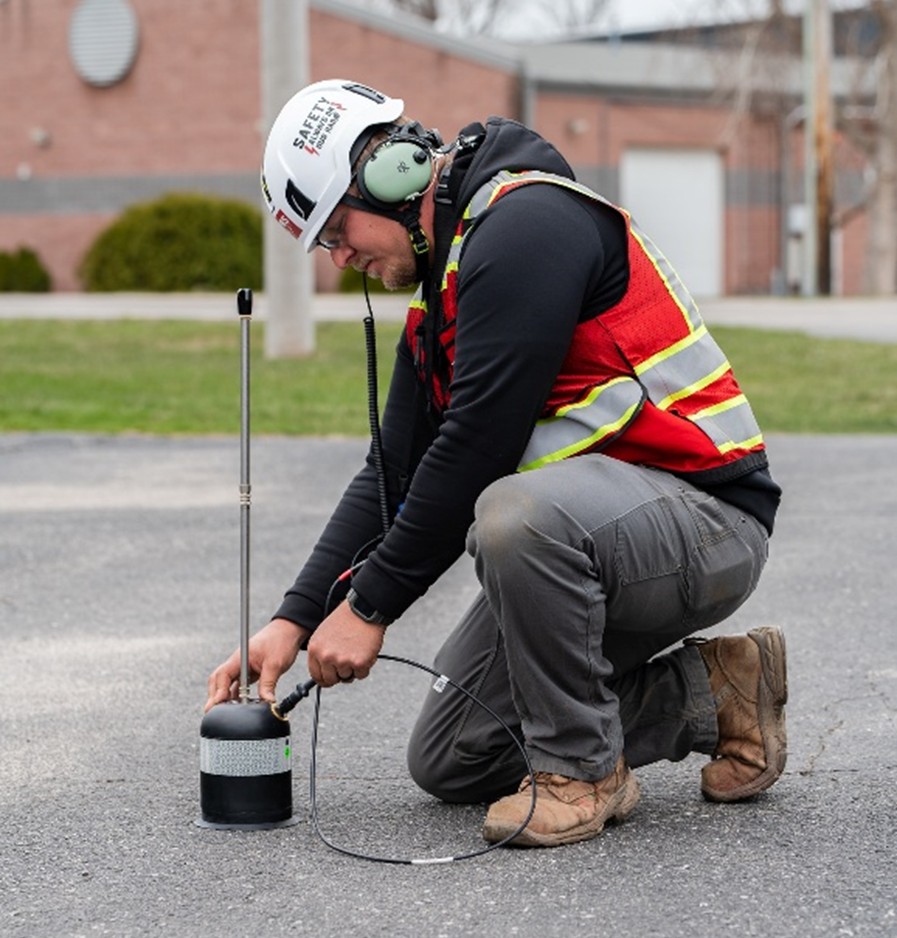
A single leak on a commercial property could lead to thousands of gallons of water lost daily, so it’s important to understand the types of leaks, what causes them, and how to prevent them.
Types of Leaks in Commercial Properties
Chief among the primary types of leaks for commercial properties are plumbing system leaks, specifically leaks in domestic water lines. Domestic water lines carry clean water from municipal mains or private wells for drinking, bathing, or cooking.
In commercial properties, these pressurized water lines handle very high usage, so a leak in any of them can lead to heavy losses of water and money every day.
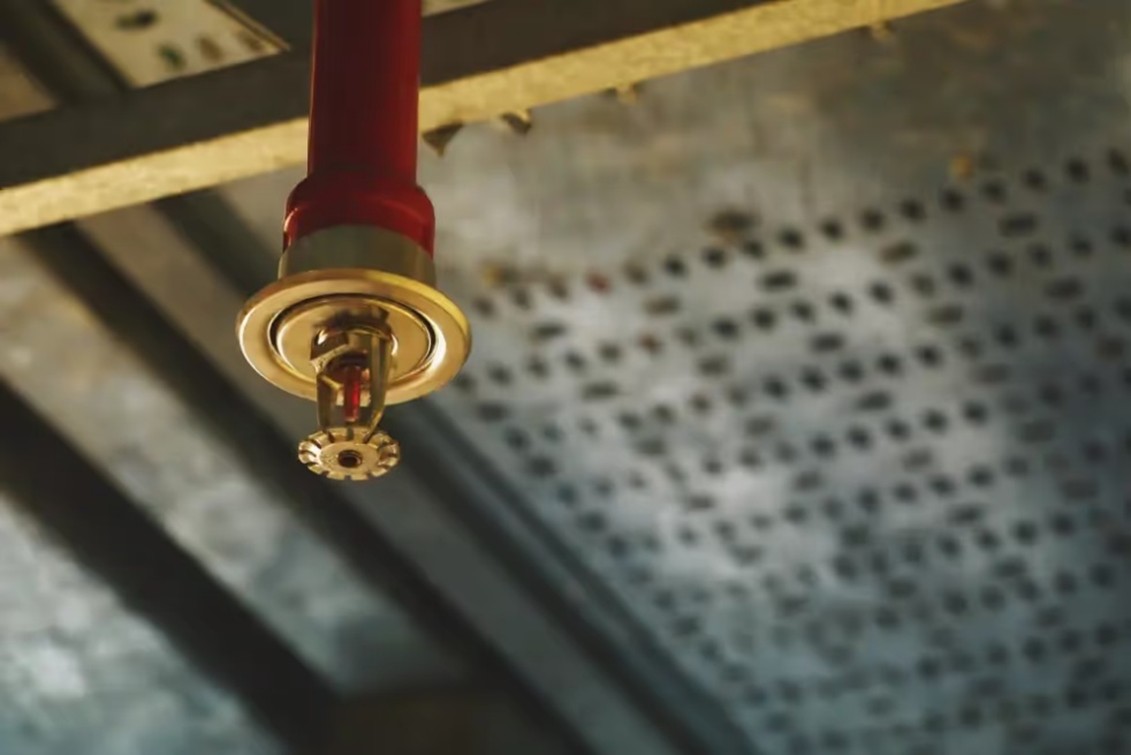
Another common leak problem are those from fire suppression systems. While leaks in fire suppression systems can lead to extra costs like any other leak, they also lower water pressure, require the use of jockey pumps to maintain pressurization, and prevent the sprinklers from operating effectively during a fire.
Fire suppression systems also consist of several critical components, like the piping network, sprinkler heads, control valves, and pressure regulators. If these components are not regularly monitored and properly maintained, that can lead to leaks and put those working or residing in the commercial buildings at risk during a fire.
Other types of water leaks include leaks in wastewater lines and HVAC systems. Wastewater lines, also referred to as sewer or sewer lateral lines, carry the wastewater from the commercial property to the public sewer system. Leaks in wastewater infrastructure can lead to costly repairs, health hazards, or operational shutdown.
HVAC systems use condensate drain lines to remove moisture from the air. If that line gets blocked or damaged, drain line leaks can occur, which can damage the system or lead to the formation of mold.
While leaks can occur in wastewater lines and HVAC systems, they are not pressurized line leaks, so GPRS doesn’t use leak detection technology to locate them. However, GPRS’ video pipe inspection (VPI) services can help find pipe defects and leaks within wastewater systems.
Causes of Commercial Leaks
Understanding what causes leaks in a commercial property makes it easier to spot and prevent them.
Some of the common causes of commercial leakage include:
- Aging water pipes: pipes can become weak and brittle over time, causing cracks that lead to water leaks
- Poor installation or defective pipes: incorrectly sealed joints or pipes that don’t fit properly cannot handle the consistent water pressure of commercial buildings
- High water pressure: high water velocity can cause weak points by stressing the water pipes to the point that the pipes can no longer contain the water
- Tree root intrusion: tree roots are opportunistic and can be attracted to hydrated soil near leaking water pipes, causing further damage as it fully expands inside the underground pipe
- Construction or renovation damage: during projects that require excavation, there is always the possibility of a utility strike, which can lead to massive water loss
By understanding these common causes, it makes it easier to spot signs of leaks in commercial facilities.
Signs of a Commercial Leak
Non-revenue water loss has become a silent crisis in America, because it’s not easy to identify. While dripping, surface water puddles, and audible sounds like hissing are signs of leaks, the signs aren’t always that clear.
Unexplained spikes in water bills could represent a leak. Spikes could represent water overuse, however, there are some occasions that are so drastic a leak could be the only reason.
Another sign of a leak is a sudden drop in water pressure. If a customer goes to wash their hands and the sink turns on at a lesser force than usual, there may be a leak. Water can also be essential in industrial facilities for cooling, cleaning or other manufacturing steps. This can significantly affect daily operations, leading to more lost time and money.
Cracks on nearby pavement or the building’s foundation can also be signs of a leak. Underground leaks can alter the soil beneath concrete or asphalt, causing voids or pockets to form underground. These voids can lead to unstable or cracked surfaces. Water leaks can also cause metal rebar beneath concrete to corrode or expand, which will lead to cracks on the surface of the concrete. This is sometimes referred to as “concrete cancer,” because of its unseen nature. By the time obvious cracks, pitting, and crumbling appear, the interior structural integrity is in jeopardy.
Lastly, mold and mildew growth can be signs of a leak. Materials like wood, drywall, and insulation absorb moisture very quickly. Damp surfaces are a prime spot for mold spores to latch onto and begin to grow. The mold can grow and spread in environments like this, so it’s important to catch signs of mold early, especially in commercial environments where many people could be at risk of mold exposure.
These common signs are a reminder of the importance of regular water and wastewater infrastructure maintenance and inspections. Without the proper due diligence, your money could be going down the drain along with every drop of wasted water.
Commercial Leak Prevention Strategies
When people hear the term “leak detection services,” they may think of it as a reactive service. However, leak detection should be an integral part of a comprehensive water infrastructure management strategy, especially for commercial buildings.
Something as simple as regular inspections and preventative maintenance can be the difference between healthy plumbing systems and losing thousands of dollars to water loss.
The regularity of inspections, however, is determined by the condition of the commercial building. How old is the infrastructure? How complex is the plumbing system? Have there been serious issues in the past? Those are all factors that should be considered when scheduling inspections and maintenance throughout the year. And if that information isn’t readily available, start keeping detailed records of the facility’s infrastructure. If an emergency were to occur, that information is vital.
Keeping employees and maintenance personnel educated on leak warning signs can also prevent unnecessary water and money loss. It’s easier to spot problems when there are as many eyes monitoring them as possible.
Another way to stay on top of leak detection-related issues is to consistently monitor water usage. When operating businesses like a hotel or shopping centers, spikes in monthly water bills could be from patrons or employees overusing their facilities. Yet, a spike in water usage, as previously mentioned, could also be because of a leak. It’s important to constantly monitor water usage, so it’s easier to identify spikes from overuse and spikes from possible leaks.
If a leak is suspected, it is always best to hire a professional to non-destructively locate the leak, so it can be efficiently located without the extra costs of unnecessary excavation and the possibility of striking a utility.
Benefits of Non-Destructive Leak Detection
Non-destructive leak detection saves clients time and money while keeping everyone safe. Without the specialized equipment utilized by GPRS’ expertly trained Project Managers, commercial properties must rely on destructive methods to inspect leaks, like excavating.
Compared to non-destructive methods, destructive leak detection practices require more time and money. Along with digging into the ground and repairing the excavated areas, there is the need to dig in multiple areas to find the source of the leak. With non-destructive pinpoint leak detection, the leak is located first in less than half the time, and then the client can dig in the area with the leak to fix the problem.
On a recent leak detection job in Hobart, Indiana, GPRS was tasked with locating a leaks at an apartment complex. They were noticing higher water usage every month and realized they were losing hundreds of thousands of gallons of water every day.
GPRS Project Manager Cody Exner was able to locate the source of the leaks. If GPRS had not been on this job, the client would have called a plumber instead. For this issue, a plumber would have taken out all underground lines to inspect the cause of the leaks, which would have cost tens of thousands of dollars.
There is also the risk of a utility strike when excavating the soil. With large commercial buildings, a utility strike can completely derail operations and put people’s safety at risk. If you strike a power line at an office building or industrial facility, no one can do their job. Strike a gas line outside an apartment complex in the winter? Every patron will have no heating for their rooms, and any kitchens will be unable to cook a meal. Not to mention the high risk of injury or even death for the workers excavating the ground when a utility line is struck.
When working with GPRS, clients receive our 99.8% accurate underground utility locating scans on top of our state-of-the-art leak detection equipment. By combining these complementary technologies, GPRS Project Managers can pinpoint the leak and show clients where it is safe to dig to address the leaking pipe.
GPRS Leak Detection Equipment
The main tools utilized by GPRS Leak Detection Project Managers include acoustic leak detectors and leak noise correlators.
Acoustic Leak Detectors
Acoustic leak detectors locate leaks with a sensitive ground microphone or an acoustic listening device. The device is either used at the surface level or dropped into a manhole. Acoustic leak detection equipment typically consists of a microphone, noise-cancelling headphones, and an electric monitor. Project Managers can add an “elephant foot,” a bell-shaped acoustic shield, around the mic to isolate outside noises and amplify the leak tones.
It takes very well-trained ears to identify the sounds of leaks. Other factors like ambient noise from active water flow and traffic driving over street-level pipes must also be identified. By understanding every sound the pipes are making, the Project Manager can properly pinpoint the location of the leak or leaks.
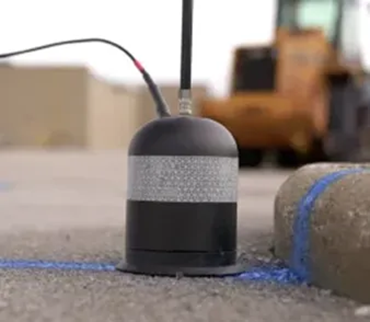
Leak Noise Correlators
Leak noise correlators, also called leak detection correlators, use sensors placed on both sides of a pipe that send information back through radio waves. The processing unit compares the data with algorithms designed for certain noise profiles, which determines the exact location of any leaks.
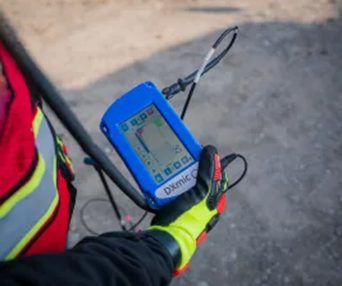
Project Managers can use leak noise correlators and acoustic leak detectors in tandem to provide clients with the most accurate location of their leaking pipes.
As previously mentioned, both acoustic leak detectors and leak noise correlators can also be used with utility locating equipment, like electromagnetic (EM) locators and ground penetrating radar (GPR). By using them with leak detection technology, GPRS Project Managers can mark exactly where the leak is located on the ground and ensure the leak can be fixed without striking other utilities.
Water & Sewer Damage Awareness Week
The American Society of Civil Engineers (ASCE) estimates that 6 billion gallons of treated water is lost each day in the United States. To spread awareness about the risks to our water and wastewater infrastructure, GPRS sponsors the safety initiative Water & Sewer Damage Awareness Week (WSDAW).
Every year during the last week in October, our safety experts offer complimentary safety talks to commercial property owners, municipalities, facility managers, and anyone else responsible for water and/or wastewater infrastructure. The presentation includes talks on the best practices for proactive maintenance of your water and wastewater infrastructure. GPRS leak detection and video pipe inspection services can help ensure the integrity of your infrastructure with annual or bi-annual inspections.
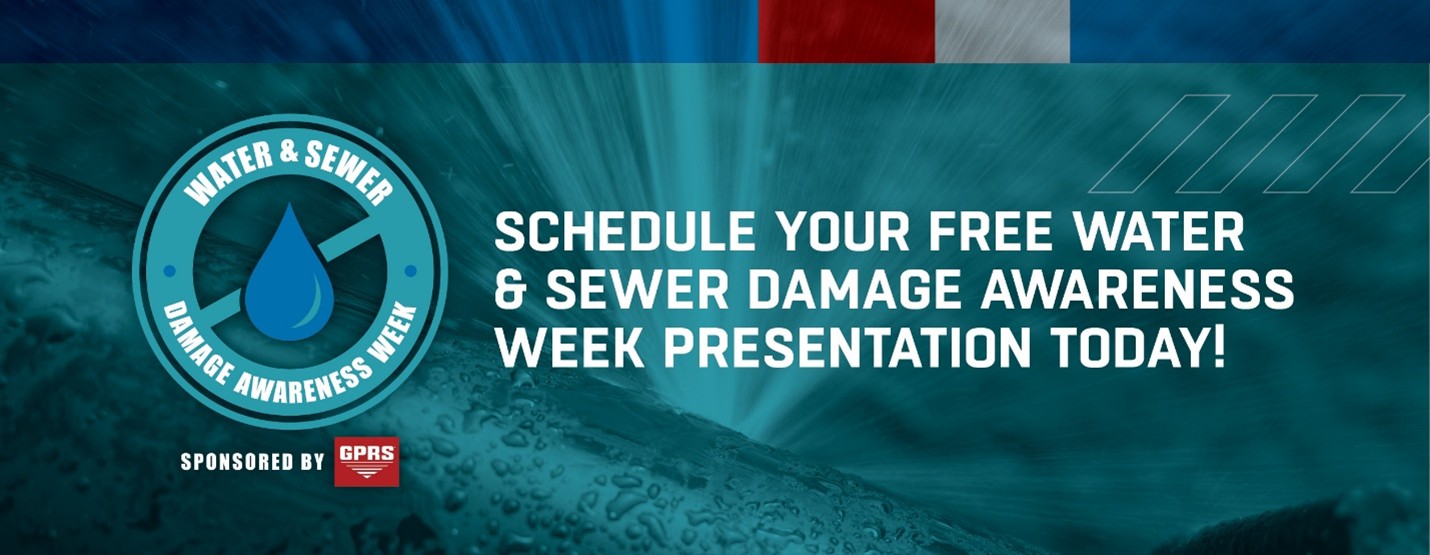
From leaking underground pipes to buildings that pierce the sky, GPRS can visualize YOUR built world to show you what you need to see when you need to see it.
What can we help you visualize?
FREQUENTLY ASKED QUESTIONS
How long does a leak detection usually take?
How long it takes to find your leak depends on the system size, complexity, and access conditions. A standard survey of a small facility or municipal segment may take several hours, while larger networks can require multiple days. GPRS optimizes efficiency through pre-survey planning and site walks, real-time data collection, and advanced equipment, minimizing disruption and ensuring timely reporting.
Why does leak detection usually occur early in the morning?
Our acoustic listening equipment is highly sensitive and amplifies leaks and other noises which mask leak signals during the day. In a city environment, the ambient noise – airplanes, traffic, mowers, machinery, and most importantly, people using water – can often mask the noise made by the leak. The GPRS Project Manager assigned to your job will determine if night work is necessary to minimize the amount of ambient noise.
Can you determine the size of a detected leak?
We determine the size of the leak by how far the leak signal travels between contact points and the pitch of the tone received. We do not, however, produce formal leak estimations.
What is an annual leak survey and why do they matter?
An annual leak survey is a scheduled inspection of water infrastructure to identify and document leaks. These surveys are critical for regulatory compliance, environmental protection, and cost control. Regular assessments reduce water loss, prevent hazardous conditions, and extend asset life. For municipalities and facilities, annual surveys support proactive maintenance and budget forecasting.



.svg)